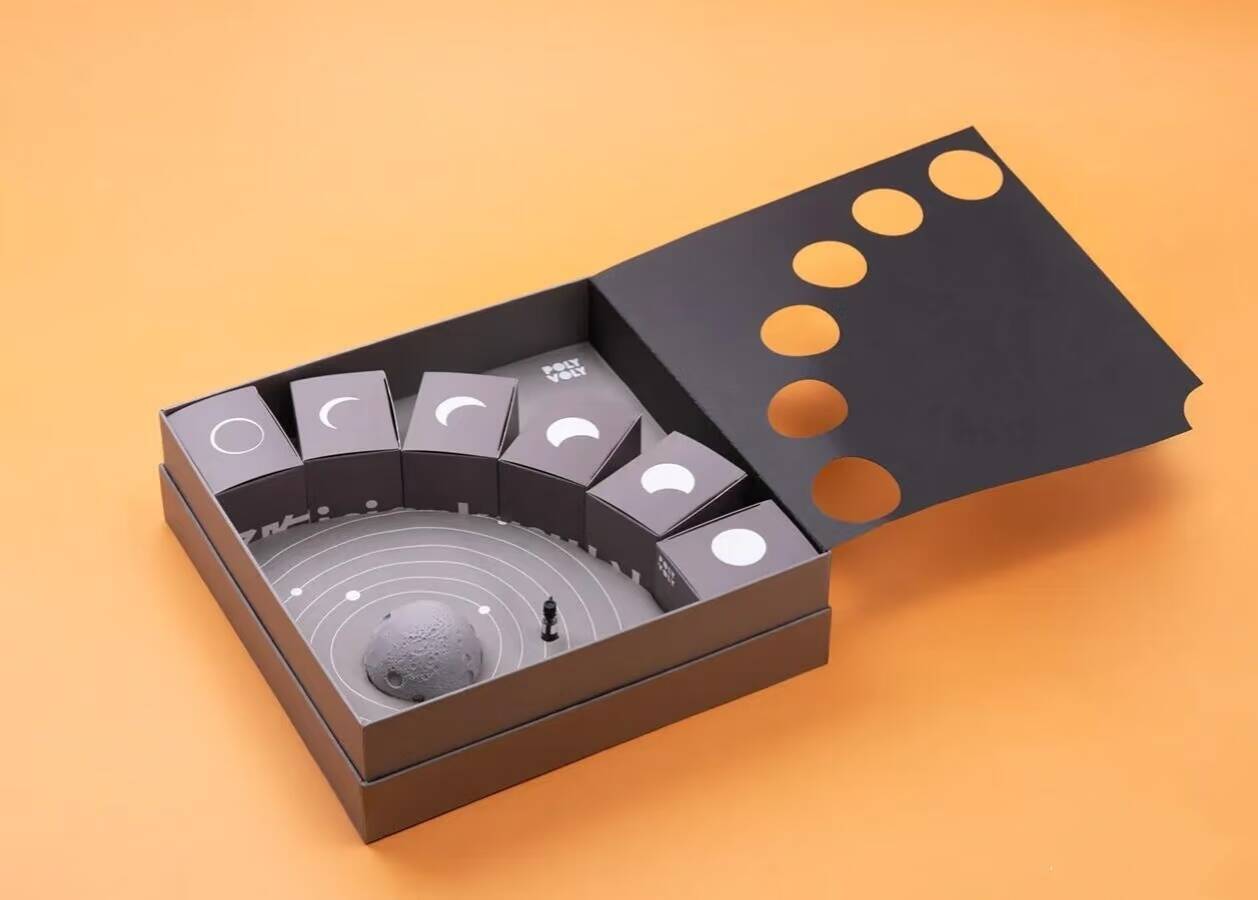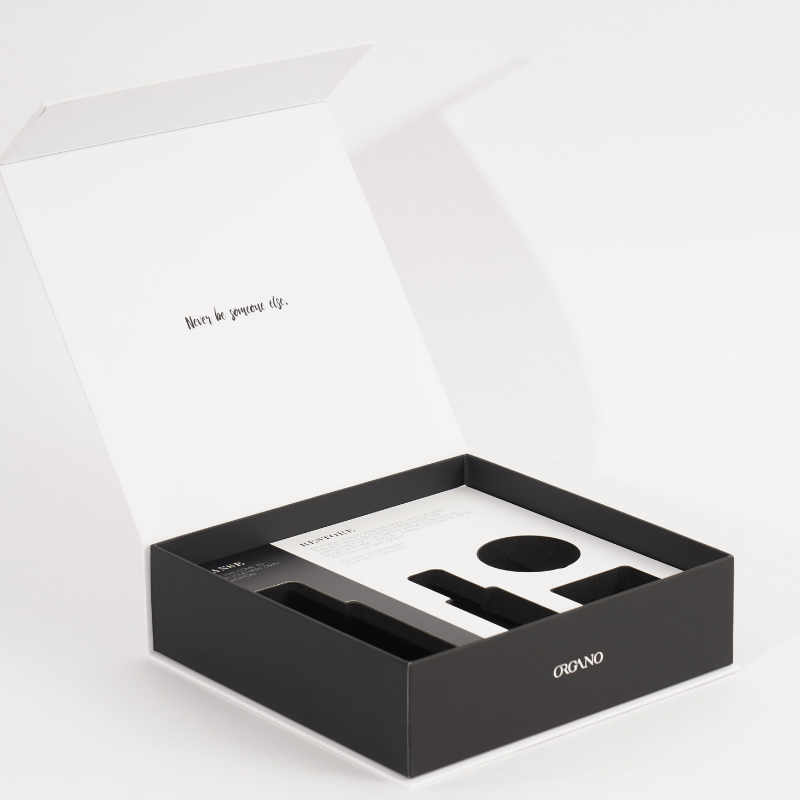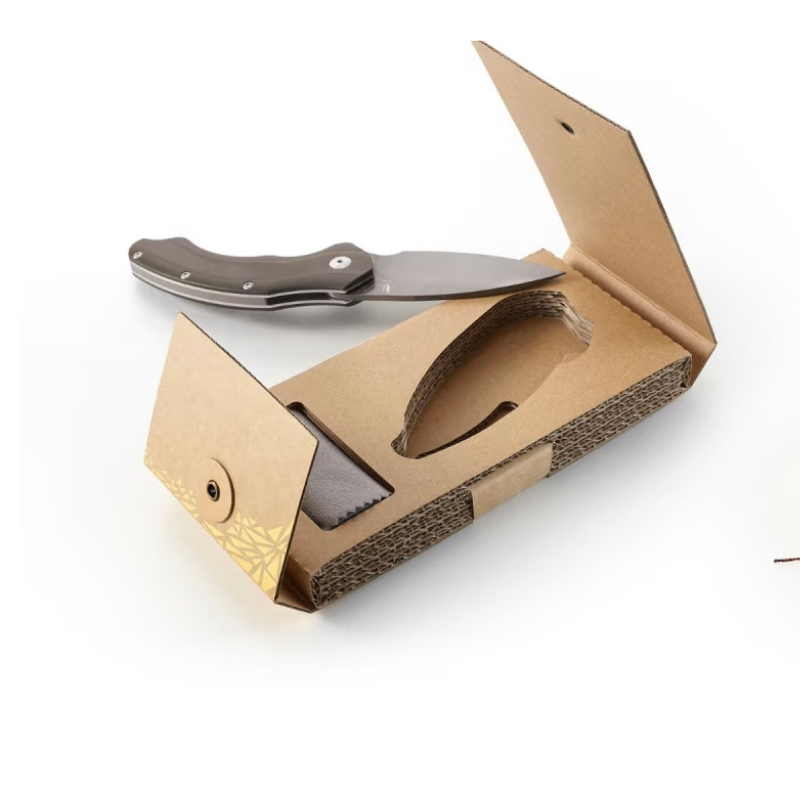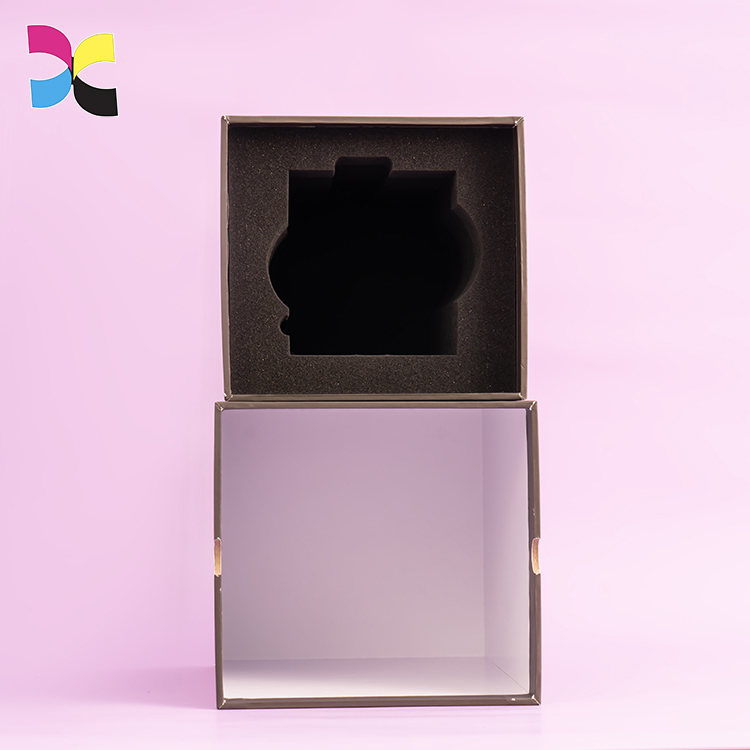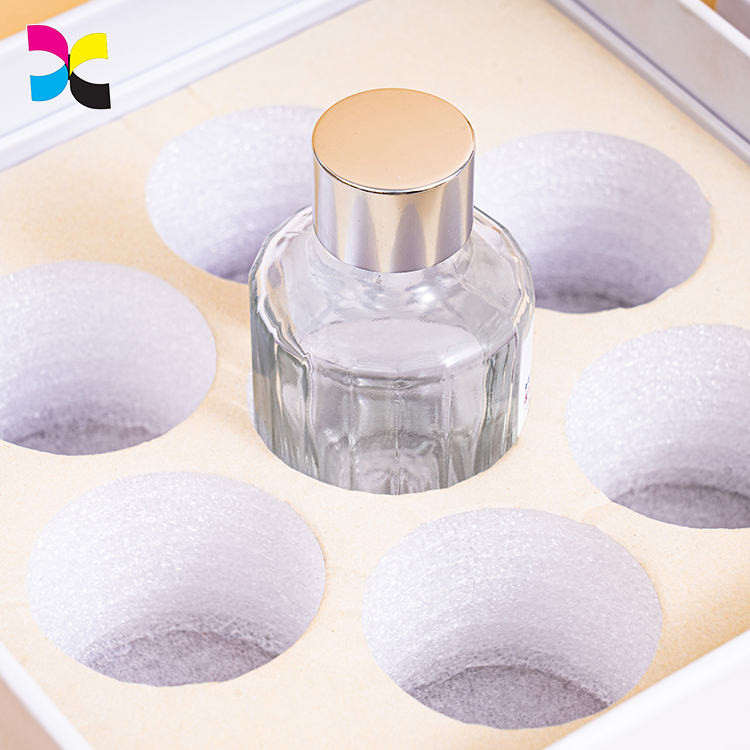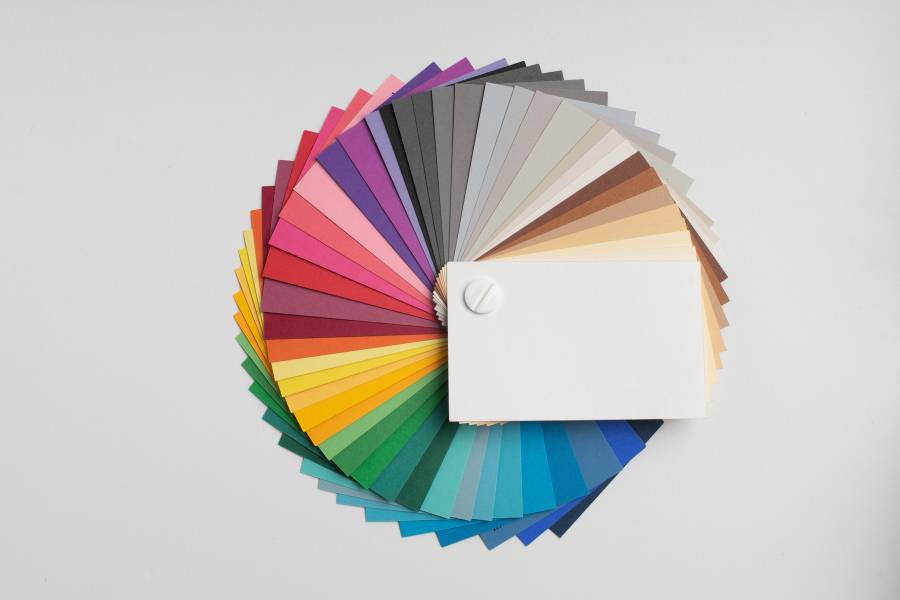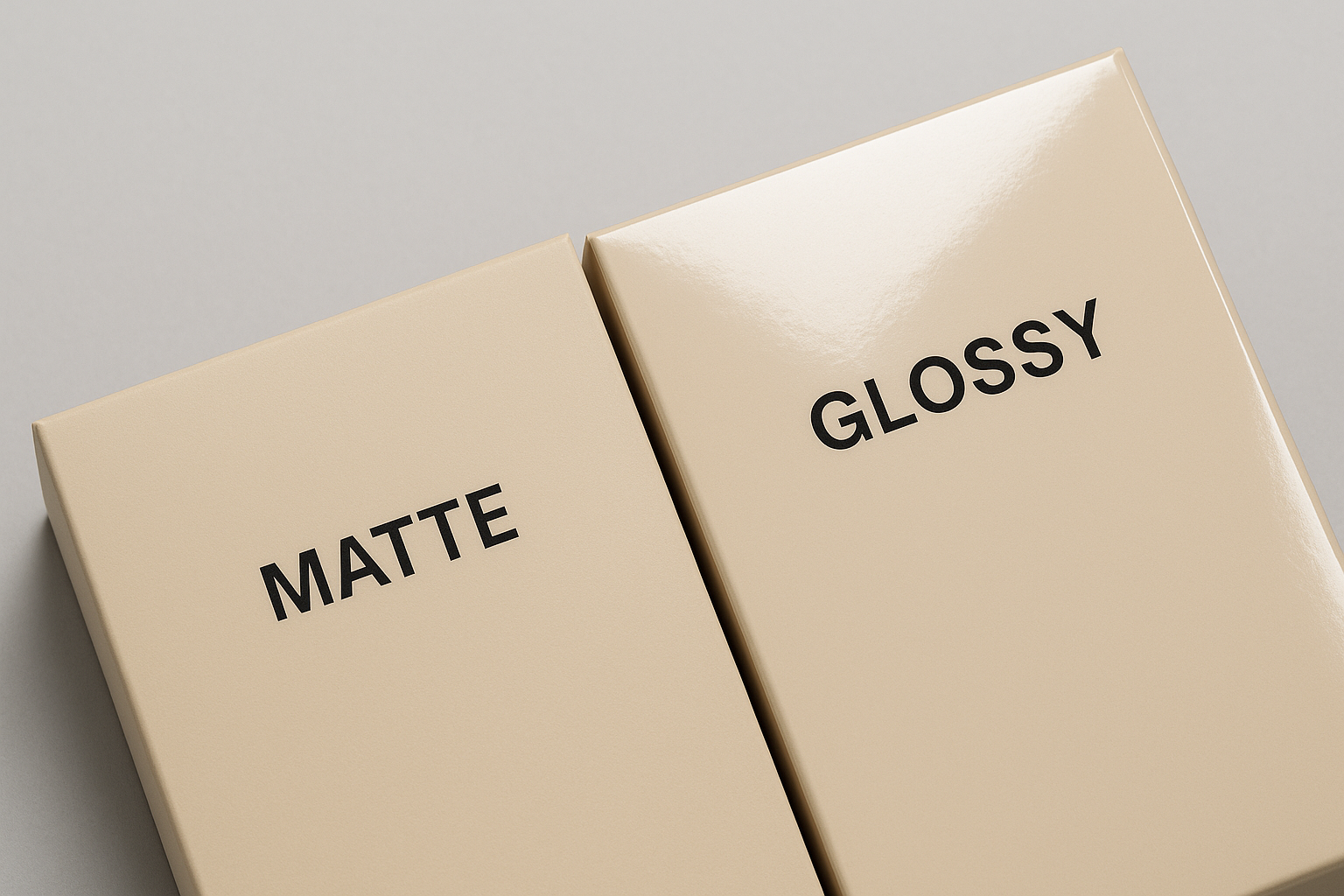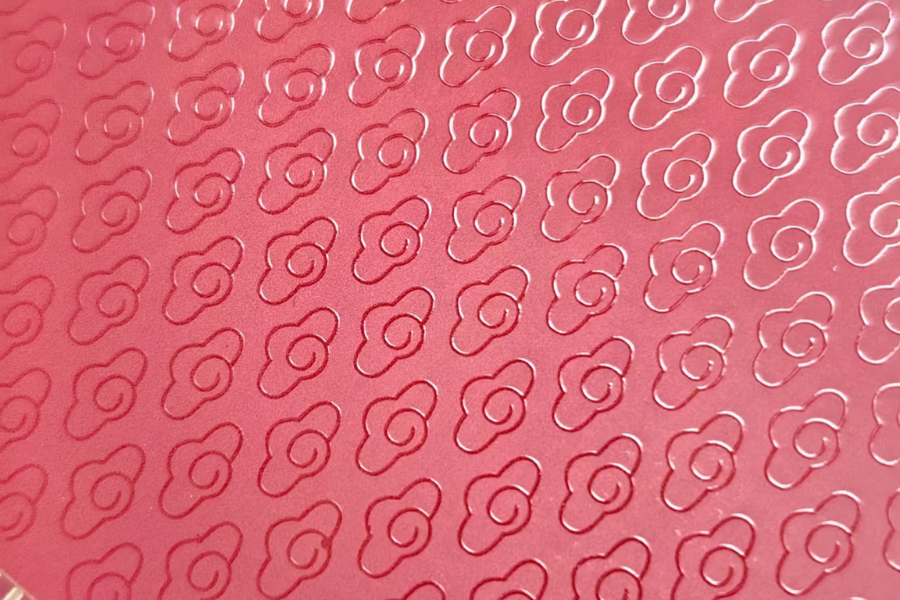Besides lost packages, product damage during transportation is another major risk often faced in e-commerce. In everyday packaging, custom box inserts are a practical solution that can almost eliminate this problem while maintaining both protection and presentation. As logistics demands for various products continue to grow, the design and materials of inserts have also evolved. The insert of the custom packaging box can be divided into paper insert, foam insert and plastic insert according to the material. Choosing the right box insert can help your brand reduce customer complaints and return rates.
Paper Custom Box Inserts – Eco-Friendly and Cost-Effective Option
Paper box inserts can generally be divided into corrugated cardboard inserts, grayboard inserts, and molded pulp inserts.The greatest advantage of paper box inserts over other materials lies in their ability to meet customers’ eco-friendly expectations. Whether used for standard shipping boxes or premium gift packaging, paper-based inserts are always among the top options for customization.
Custom cardboard inserts are highly customizable patterns or designs can be printed inside to create interactive effects with the product and enhance the unboxing experience. They are lightweight, foldable, and versatile, making them one of the most commonly used insert types, from stationery to high-end instruments.
Grayboard inserts are firm and smooth in texture. When covered with luxury paper or specialty finishes, they deliver a premium and elegant appearance. This style is often seen in luxury watch boxes or high-end cosmetic packaging, where brands want to highlight sophistication and quality.
Molded pulp inserts, on the other hand, are the most familiar eco-friendly example. the same material often used for egg trays. They provide excellent cushioning and product-fitting performance while maintaining strong environmental benefits. Today, molded pulp inserts are increasingly used for fragile items like wine bottles, combining protection with sustainability.
Foam Custom Box Inserts – Best for Fragile Product Protection
Among foam inserts, the most common type is EPE (Expanded Polyethylene) foam, also known as pearl cotton. It is even lighter than paper inserts, yet offers excellent softness and resilience. Foam inserts are typically designed with compartment-style layouts, ensuring that each product fits snugly into its own space. This provides maximum protection against impact, shock, and vibration during transportation.
Because of these features, foam inserts are often the first choice for fragile or vibration-sensitive items. In addition to EPE, there are also EPP (Expanded Polypropylene) and EVA (Ethylene Vinyl Acetate) foam materials, each offering different levels of density and cushioning based on the product’s needs.Foam inserts are widely used in jewelry packaging, tableware shipping, and camera lens protection, where both safety and presentation are important.
Plastic Custom Box Inserts – Durable and Precisely Molded Fit
Compared with other materials, plastic box inserts tend to have higher production costs, especially for small-batch customization. They are made by heating and vacuum-forming plastic sheets over a mold a technique commonly used in smartphone and earphone packaging.
One of the main advantages of plastic inserts is their excellent structural strength, making them ideal for heavier products that require firm support. Clear or transparent plastic inserts also provide a visually appealing display, allowing the product to be showcased while securely held in place. Although plastic inserts are usually used in premium display packaging, they are also lightweight and space-efficient, which helps control shipping costs during transportation.
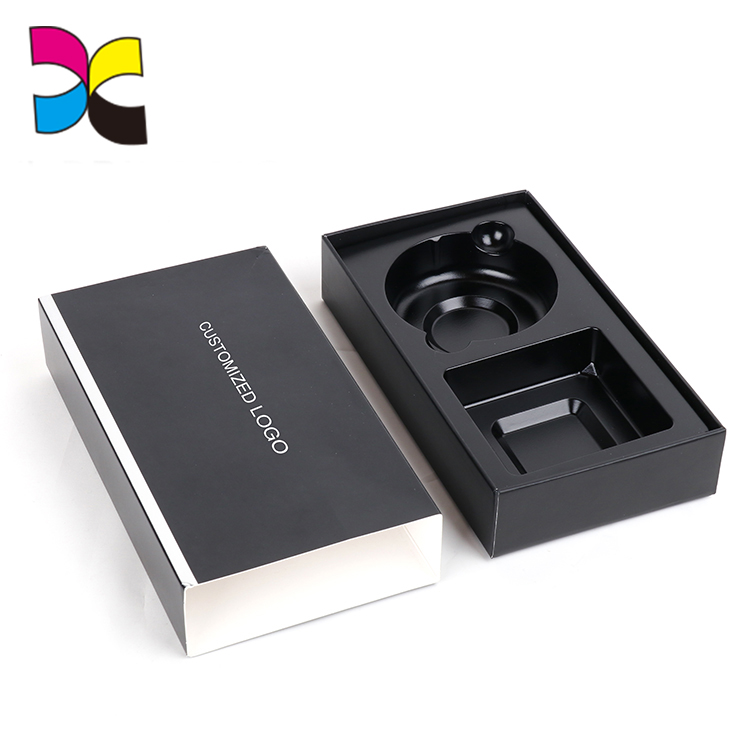
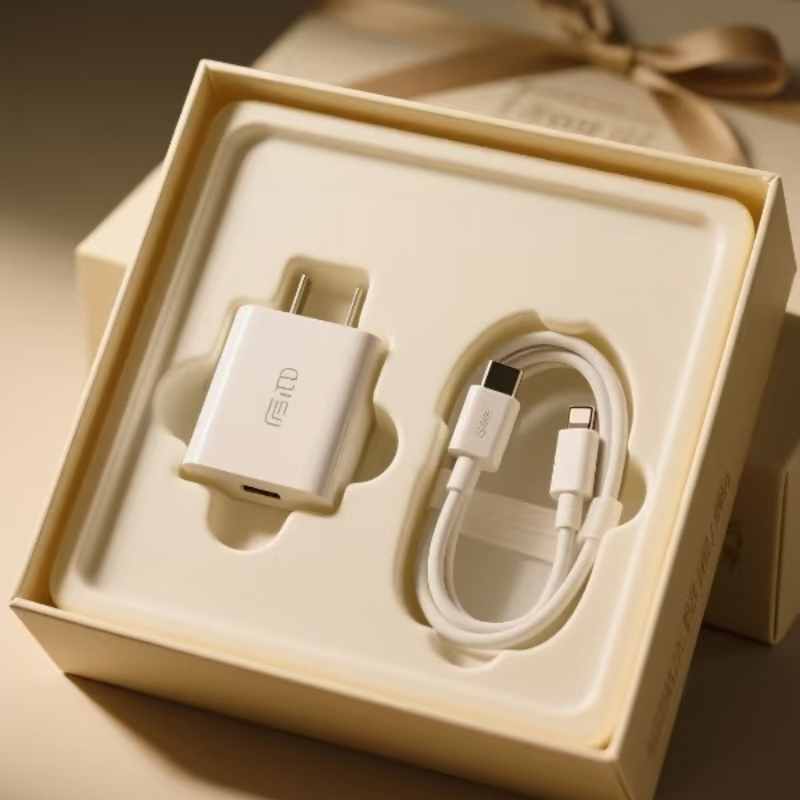
Common Mistakes in Box Insert Design and How to Avoid Them
Designing a custom box insert is not only about fitting the product — it’s about engineering precision, structural balance, and cost efficiency. Whether it’s paper, foam, or plastic, each material type has its own design rules. Below are the most common mistakes found in box insert design and how to avoid them.
1. Ignoring Structural Mechanics in Paper Inserts
One of the biggest mistakes with paper inserts is neglecting the structural mechanics that give the insert its strength. The corrugation direction of cardboard should always run perpendicular to the pressure direction to provide optimal support. Over-relying on glue instead of using locking tabs or interlocking flaps can weaken assembly and increase labor costs.
Another common oversight is depending solely on material thickness for cushioning — instead, use folded suspension structures, wave patterns, or honeycomb designs to absorb impact more effectively.
To prevent tearing, always design creasing lines and rounded corners, ensuring smooth folding and an even finish.
2. Overlooking Tolerance and Fit Precision
Paperboard has elasticity, which means tight fits or zero clearance designs can cause deformation or assembly issues. Always allow 1–3 mm of tolerance between the product and insert cavity. For high-end products such as electronics, inaccurate die-cutting may lead to scratches or product shifting, which can quickly result in returns or complaints.
3. Ignoring Foam Density and Thickness Balance
A frequent mistake in foam insert design is choosing the wrong density or thickness. Some assume higher density equals better protection, but that often makes inserts too rigid and costly. Instead, select a foam density that meets the cushioning requirements for the product’s weight and fragility.
Designers should also avoid point or line contact between the foam and product surface — this concentrates pressure and increases the risk of damage. A well-designed foam insert distributes weight evenly across larger contact areas.
All inner edges should have rounded corners to prevent tearing under vibration and make demolding easier for molded foam.
4. Neglecting Mold Feasibility and Manufacturing Constraints
Complex internal shapes may look great in CAD software but can be impossible or uneconomical to produce. Always evaluate whether your knife mold or CNC cutter can achieve the intended geometry. For thicker or heavier products, consider two-piece foam inserts (top and bottom) to simplify production and packing.
5. Uneven Wall Thickness in Plastic Inserts
Plastic inserts require precise mold design. One of the most common errors is uneven wall thickness, which can lead to warping, shrinkage, or internal stress cracks. Maintaining a uniform wall thickness (1–2 mm) ensures better strength and appearance.
Another issue is missing draft angles — without them, the insert can get stuck in the mold during demolding. A 1°–3° draft is typically required, depending on the shape. Designers should also use rounded corners (R-angles) for smoother material flow and to prevent cracking.
6. Overlooking Reinforcement and Vacuum Details
Large, flat areas in plastic inserts often deform if they lack reinforcing ribs. Adding ribs (about 50–60% of the main wall thickness) strengthens the insert without increasing material use.
For vacuum-formed trays, missing or misplaced vacuum holes can leave visible marks on the product surface. These holes should be strategically positioned away from display areas.
7. Poor Fit and Functional Features
A perfectly fitting insert enhances the customer’s perception of quality. Plastic inserts can achieve tolerances under 0.5 mm, enabling a precise “click fit.” Incorrectly designed snap joints or hinges, however, may break easily or lose elasticity over time. Testing the durability of locking features during prototyping can prevent large-scale production issues.
How to Choose the Right Box Insert for Your Product
Choosing the right box insert is about finding the perfect balance between protection, presentation, and cost. Each material paper, foam, and plastic has its strengths, and the best choice depends on your product’s size, fragility, and market positioning.
1. Consider the Product’s Weight and Fragility
Lightweight items such as stationery or skincare products can use paper inserts, which provide enough stability while maintaining a sustainable image.
Fragile or vibration-sensitive items (like glassware, ceramics, or electronic components) benefit from foam inserts that absorb shocks effectively.
Heavy or high-value products (such as electronics, tools, or premium displays) often require plastic inserts for their strong structural support and clean, molded fit.
2. Align Material Choice with Brand Image
If your brand values eco-friendliness and sustainability, paper or molded pulp inserts reinforce that message.If your focus is on luxury, precision, or high-end presentation, grayboard or plastic inserts deliver the sleek, professional appearance your customers expect.And if your brand emphasizes practical protection and efficiency, foam is the reliable middle ground.
3. Balance Budget and Volume
For large production runs, even small material savings per unit can lead to significant cost reductions, so paper or molded pulp inserts are often more economical.
For small-batch or premium products, investing in custom molds for foam or plastic can elevate perceived value and customer experience.
4. Test Before Mass Production
Always request prototypes or samples before finalizing the design. This allows you to check product fit, assembly convenience, and visual consistency. Minor adjustments at the prototype stage can prevent large-scale rework and ensure a smoother packaging process.
Final Thought
A well-designed custom box insert not only protects your product and it communicates your brand’s quality, attention to detail, and care for customers. Whether you choose paper, foam, or plastic, a thoughtful design will reduce shipping damage, minimize returns, and enhance the unboxing experience that defines your brand.

